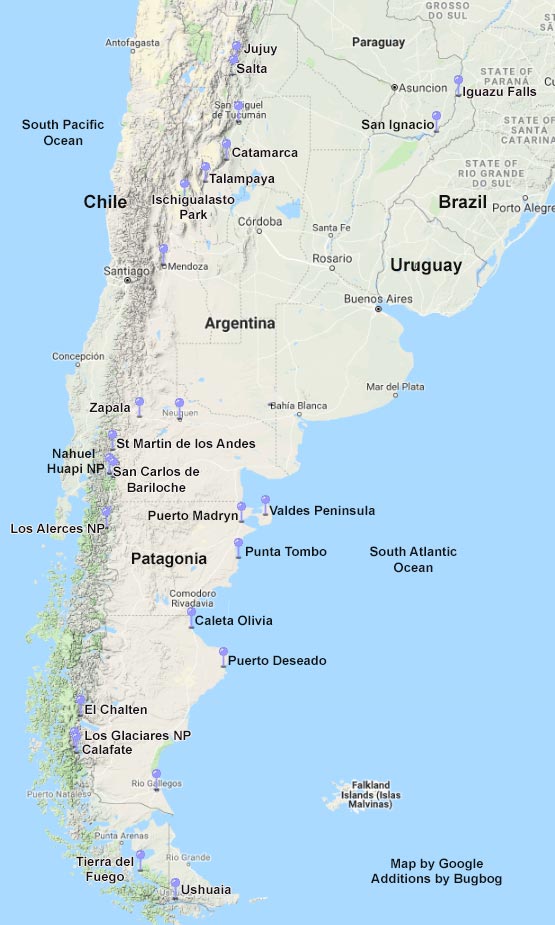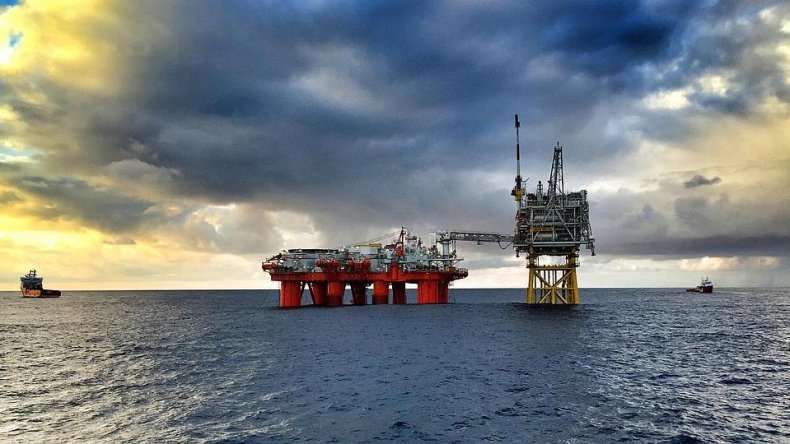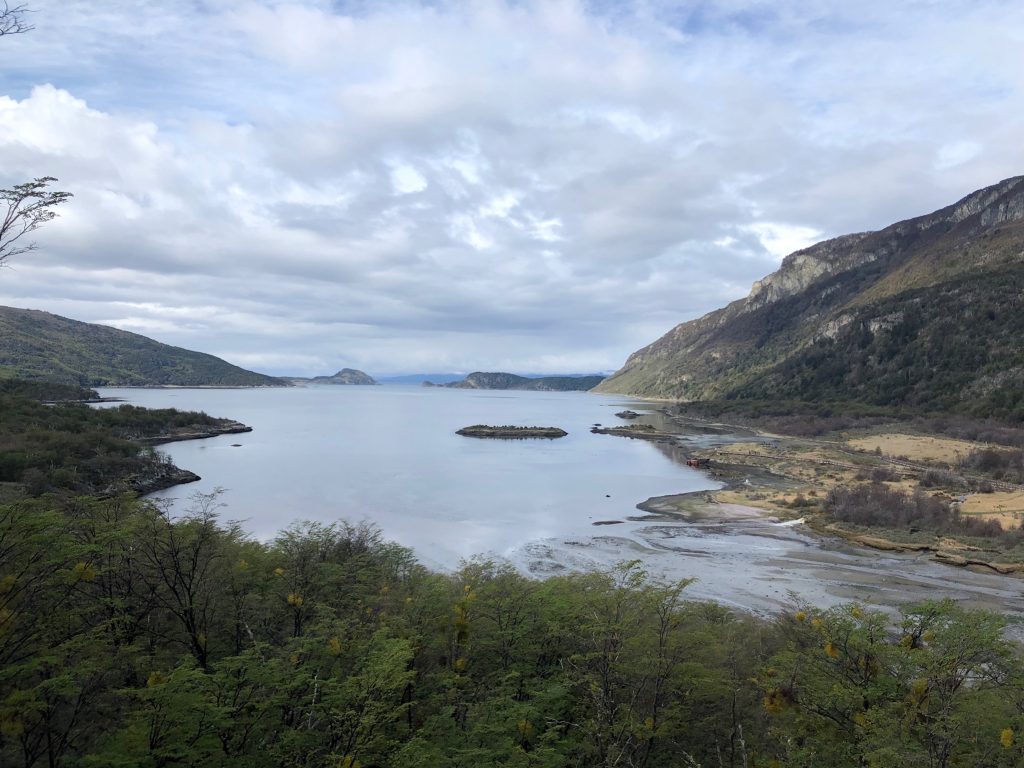Header Photo by Catie Brown 2019
El Fin del Mundo, the end of the world, boasts an abundance of beauty. Snow-capped mountains, the natural beauty of Patagonia, the enchanting peat bogs and parks of Tierra del Fuego, beavers, huemuls, histories brought to life in museums, skiing, hiking, penguin-watching, sea lion spotting, delicious seafood restaurants — it’s safe to say that Ushuaia has a lot going on. What else could the city at the end of the world possibly have? Mining operations.

Beyond a long history of state repression for the sake of land seizure and natural resource extraction against indigenous populations, Patagonia’s natural resources are now being exploited by hopeful foreign investors hoping to capitalize on the extraction of oil and gas. As a tremendously large area that runs through both Chile and Argentina, the energy operations in Patagonia are numerous to say the least. The Vaca Muerta is a region where large companies like Total, Exxon, and Dow Chemical are investing and is the second-largest reserve of ‘unconventional’ oil and gas in the world, according to the Buenos Aires Times. This area is one that “fuels Argentina’s dreams of becoming a major fossil fuel producer” because it is estimated to contain 30,000 square kilometers of ‘recoverable reserves’, which is the equivalent of 27 billion barrels of oil and 802 trillion cubic feet of gas.
However, this development for exportation of gas and oil does not come without its price. The extraction of oil, gas, and hydrocarbons through fracking is a waste-producing industry that not only contaminates the area of extraction but can be transported to ‘special waste deposits’ in areas like Catriel and the Neuquén Basin threatening the health and landscape of the communities already living there. While Catriel’s protests were heeded by local authorities and the construction of that waste site was halted, other communities have not fared as well.
“The problem is that ‘fracking’, which is used to extract unconventional hydrocarbons, generates waste on a much larger scale than conventional exploitation… not only do the chemicals used to carry out the drilling and hydraulic fracturing come back to the surface, but also radioactive materials of natural origin that are in the subsoil…There is a saturation of oil waste in the Neuquén Basin from fracking, which is a dirty technique. Then came this new business, waste disposal, which has a huge environmental impact because contaminants can seep into the groundwater.”
Martín Álvarez, a researcher at the non-governmental interdisciplinary Oil Observatory of the South (OPSur) in an interview with the Inter Press Service News Agency
The Mapuche community that lives in Patagonia has faced the largest effect from fracking outside of the United States. The YPF company in conjunction with Chevron developed the first fracking operation in Vaca Muerta in 2013. With 500 wells built in the territory of the Mapuche people without prior discussion or agreement from the community, 5,000 people protested fracking in the area to no effect. Protests met with police repression in the region continue through today and some land has simply been claimed by the State outright for international investment. According to CETIM, sacred lands have also been claimed for extraction purposes and the “residents are especially concerned about the long-term effects this activity may have on their territory, particularly that it might contaminate surface and underground water sources” since the area has already seen the effects of oil spills and radiation leaks.

Is there any hope for renewable energy in Patagonia?
The Argentine Patagonia has begun to see some exploration into alternative energy resources. The ‘Vaca Muerta of wind’ is seeking to take advantage of the 12-meter-a-second winds that rush through Patagonia. Maximiliano Morrone, the director of the Renewable Energy Department at the Energy Secretariat, in an article for the Buenos Aires Times, explained that “in recent years Argentina has experienced a frantic boom in renewable energy” and “is considered an eolic granary in terms of its winds”. And scientists like the chemical engineer, Fabiana Gennari, are developing revolutionary technology that can safely store hydrogen and allow energy from the sun or wind to be stored for later use (technology which earned her the UNESCO prize in 2016).
When I visited the Museo Marítimo in Ushuaia (the Maritime Museum), I was informed of the history of the city as a penal colony of Argentina, of the Yámana people whose traditional territory included this area, and of the habits of the penguins that live on the nearby Martillo Island. Also featured in the museum was the Argentine company Total Austral. It is the second largest gas operator in the country; this company is responsible for 25% of the gas production of Argentina.
The Total Foundation explains in their exhibit that it aims to support biodiversity in the region and has funded the construction of a museum-laboratory on the Harberton Ranch near Ushuaia in association with the Austral Scientific Research Center (CADIC) and the National Scientific and Technical Research Board (CONICET). Their Ushuaia off-shore drilling project is committed to “providing a solution to Argentina’s increasing demand of energy and contributing to sustainable gas supply in the country”.
However many organizations, like Greenpeace International, worry that Argentina is investing in fossil fuels through companies like Total Austral when the world really needs to decrease its fossil fuel production. Compounded with the human rights violations conducted to establish lands for fracking, international environmental organizations are protesting this extraction of Patagonia’s resources under the guise of ‘development’.
Is it possible to be moving towards a more sustainable world while continuing to invest in fossil fuels? In a time of economic crisis in Argentina, is it possible for renewable energy production to play more of a role than traditional extraction? While Argentina’s hydrocarbon business could start to challenge oil and gas extraction, will it be soon enough? These are questions that face Argentina and the world and now is the time to find answers for them.

To learn more about conservation and biodiversity protection in Patagonia and Argentina, check out the Fundación Ambiente y Recursos Naturales (FARN) and Greenpeace Argentina.
 Food
Food Farmers
Farmers Sustainable Living
Sustainable Living Living Planet
Living Planet News
News